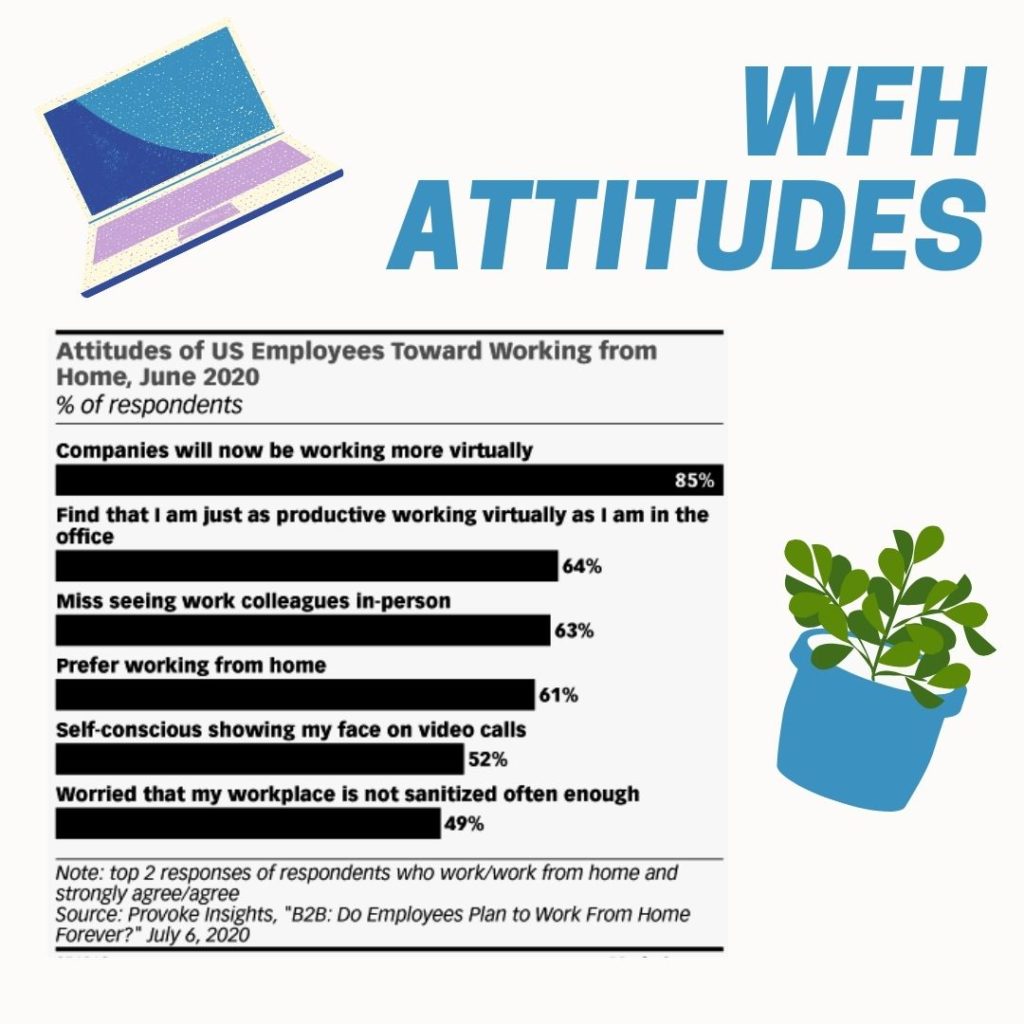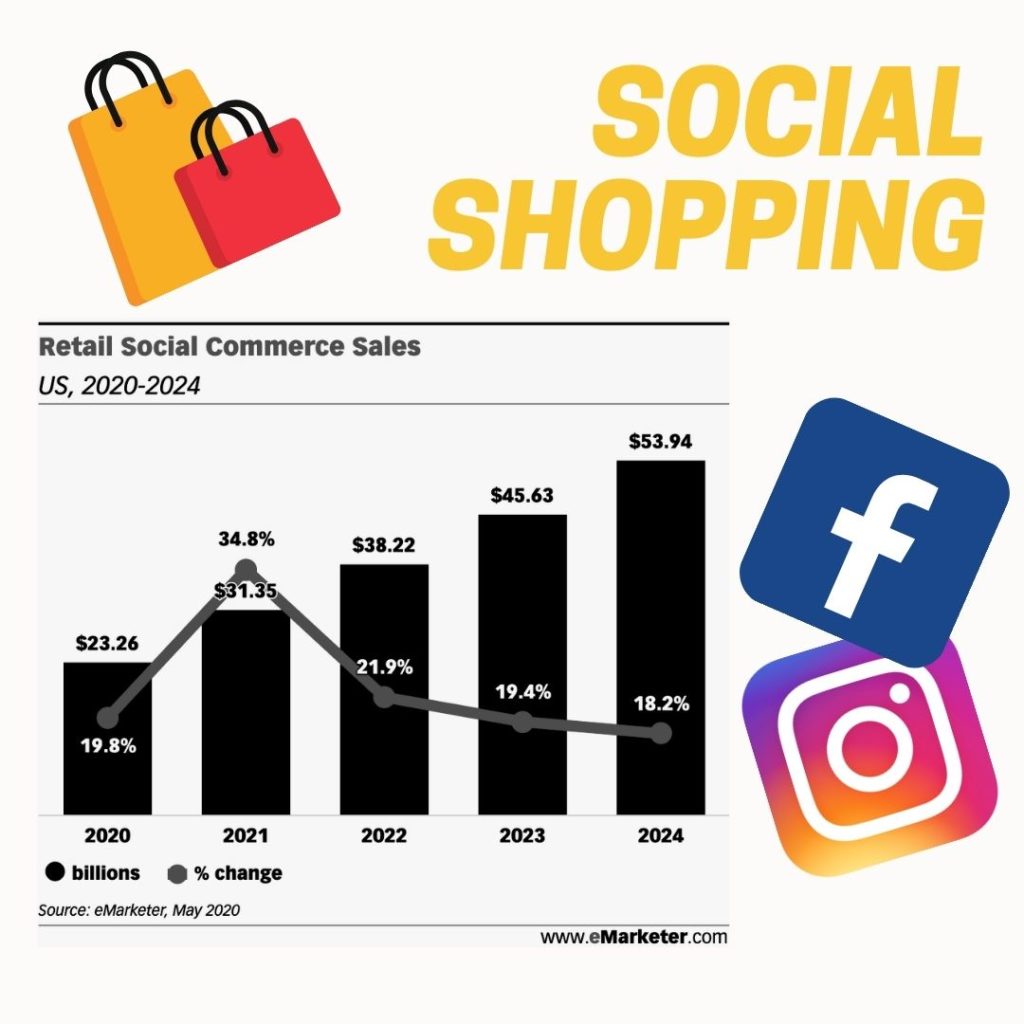With the close of an extremely tumultuous, unpredictable and (forgive us) unprecedented year, we now turn our eyes toward 2021. How can we prepare our marketing and advertising budgets and strategies for an equally erratic and capricious year?
The COVID-19 vaccine is rolling out across the country as we type this, yet many Americans won’t be able to receive it until late spring or summer. We may find our lives returning to normalcy by next fall, which even may be anything but normal.
With so much uncertainty, how do we, as marketers, plan? We asked our staff to gaze into that oft murky crystal ball and extract morsels of insight to share with you.
Here are our seven digital marketing trends for 2021.
1. Working From Home is Here to Stay
As noted above, COVID-19 vaccines are approved and ready for deployment. Nevertheless, the new work-from-home culture is unlikely to revert back to its former status quo. According to eMarketer, 85 percent of U.S. employees believe companies will continue to work more virtually in the future and 61 percent prefer working remotely. This could have large ramifications for advertisers everywhere.

Because the workforce will remain split between in-office and at-home employees (and those who do both), midday advertising will now have an extra layer to consider, especially when it comes to placement channels.
During the pandemic, we have seen users spending far more time on Over-the-top (OTT) services (Hulu, Netflix), video game viewing services (Twitch), live video streaming, and podcasts.
As we enter 2021, podcasts show great promise as they remain a common background medium to have both in the car and at work. With a projected growth of $635 million in 2021, podcast advertising looks to be a prime competitor in a post-COVID-19 workforce.
2. The New Way to Shop
Due to the shift in online shopping behaviors during the pandemic and the simplicity of one-click shopping, social media giants set their sights to gain those growing e-commerce dollars. E-commerce is set to take center stage on mobile devices in 2021.
Facebook is taking every opportunity to introduce its Shops feature to its family of platforms. All Instagram’s formats are now shoppable, including Live and Reels. The shopping process has even been streamlined with an in-app checkout feature and additional emphasis on Reels and Shops in the recent home screen and toolbar redesign. Rounding out the introduction, Facebook’s WhatsApp is rolling out its new Carts feature, which allows users to shop directly from the app.

With 43 percent of global shoppers researching products online via social networks, eMarketer projects the U.S. will total $23.26 billion this year, growing 34.8 percent to $31.35 billion next year. How can you, as a marker, respond? 2021 must be the year you set your sights on a mobile-first shopping strategy.
3. AI-powered Customer Segmentation
Sending the right message to the right person at the right time is the gold standard for marketers worldwide. To do this effectively, you must understand your customer segments. eMarketer reports 84 percent of marketers believe audience segmentation is important to them, with 63 percent declaring it as critical.
Yet, one barrier to achieving good segmentation — segmentation that is both accurate and actionable — is the data marketers acquire is limited, insufficient or poorly organized, making segmentation impossible. Alternatively, deep, personalized segmentation of millions and millions of data points is a daunting task.
We need better data and better tools. Artificial intelligence (AI) may be the solution.
In 2021, marketers should start learning as much as they can about AI-powered consumer segmentation. What’s been a fringe, expensive technology is becoming more mainstream, and more than 40 percent of marketers use AI to help segment their customers today. The sooner you can tap into this technology, the less likely you will fall behind.
4. Advertisers Plan to Increase Spending in OTT
When it comes to consumer segmentation, one of the most important questions an advertiser must ask themselves is “what are they watching?” One platform making waves is OTT.
Over-the-top (OTT) streaming services like Hulu, SlingTV and ESPN+ are quickly dominating the American household. It seems like everyone has “cut the cord” in favor of digital streaming. By the end of 2021, eMarketer projects 68.1 percent of the U.S. population will use at least one OTT service. With so much viewership, advertisers must start targeting this behemoth.
And many will. According to eMarketer, 22 percent of advertisers plan to “significantly increase [year-over-year] spending” in the first half of 2021.
5. The Decline of Cookie Based Advertising
For over a decade, cookies have enabled a slew of media strategies, such as display and retargeting, based on user actions across different websites. However, in early 2020 Google shook the industry when it announced third-party based cookies would come to an end in two years on Google Chrome.
With 38.6 percent of advertisers defining themselves as very reliant on third-party cookie strategies, this news meant many agencies would have to rethink their strategies. Since then, marketers (and Google) have tried to navigate a soon-to-be cookieless world.

As we enter 2021, we will begin to see a steep decline in third-party based strategies. Two major trends will coincide with the decline of cookie-based advertising.
The first is that 65 percent of agencies and marketers in the U.S. will rely more heavily on first-party data, such as customer lists for retail stores. These lists will help ensure consistent reach and that personalization of ads can be created.
The second is the introduction of machine learning algorithms. A statistical approach, this will mirror the cookie-filled world but instead of reporting 300 users came from Facebook and then emails, it will begin to estimate the percent who followed those actions. Already introduced as the main strength of Google Analytics 4, we should expect to see algorithms at the forefront of advertising by the beginning of 2022.
6. Blockchain Technology More Trusted Digital Advertising
Even before the announcement of the cookie’s end, trust in advertising tracking was shaky, at best. More than $100 billion of digital advertising funds are predicted to be lost due to fraud by 2023, according to Juniper Research. For years, advertisers have demanded better accountability and transparency from publishers like Google, Facebook, and DSPs to seemingly no avail. Perhaps the solution we’ve been seeking has been in the rising tech star — blockchain.
The power of blockchain is not just to make cryptocurrencies soar in value. Blockchain is Distributed Ledger Technology (DLT), in which every transaction that occurs on a ledger is permanently stored and easily verified by all the owners on the blockchain. Each owner must verify when a new transaction occurs, providing even more transparency.
This same DLT can be used by advertisers to ensure the placement, impression, click and more of every single ad. Many tech companies have started offering this technology in the past few years. As more advertisers raise concerns about fraud and even brand safety, the transparency of blockchain may be the silver bullet we’ve been waiting for.
7. The Rise of Augmented Reality
Blockchain isn’t the only hot technology marketers should lean into. Augmented reality (AR) has a unique ability to bridge the gap between online and offline worlds for a user on platforms such as Facebook, Instagram and Snapchat. It’s a playful way to deepen engagement and awareness for brands and businesses. Because of the popularity of these AR filters, Spark AR Studio allows anyone — businesses, influencers, brands and users — to create filters for use in Stories.
Going beyond camera filters, Facebook announced its “Project Aria” wearable AR glasses while Apple is also working on its own AR glasses –– both are set for release around the same time. People are no longer living in their newsfeeds, and this fun, creative way to connect and interact with audiences should be explored. Whether it’s a virtual experience that brings your products to life, or a branded filter that reaches millions, consider testing AR in your marketing strategy next year.
Ready to Ring in the New Year?
2021 will undoubtedly surprise each and every one of us. Yet, we believe many of the digital marketing trends above are set in motion and will impact many businesses’ bottom lines. Whether it’s through investment of new technologies, optimization of advertising efficacy, or utilization of new channels to connect with consumers, each business leader must learn vigorously in each of these fields in order to make an informed decision. If you have any questions or want our team of experts on your side in 2021, please reach out to us.

